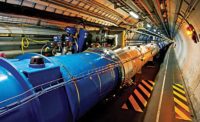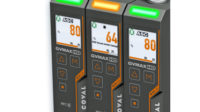In the tiny town of Meyrin, Switzerland, sits the largest center for particle physics research in the world. The facility is situated near Geneva on the Franco-Swiss border and operated by the European Organization for Nuclear Research, better known as CERN.
Housed within the building since 2008 is the world’s largest particle collider. Having a circumference of 27 kilometers, the Large Hadron Collider (LHC) collides proton and ion beams at the speed of light in underground tunnels, enabling physicists to further their understanding of the basic constituents of matter.
The accelerated particles travel in beam lines that require ultra-high vacuum conditions. Turbopumps with a high compression ratio for light gases generate this vacuum, which is necessary for the operation of superconducting magnets. Turbo pumping stations that pre-evacuate the beam lines are equally important.
For many years, pumps and pumping stations made by Pfeiffer Vacuum GmbH have been used to generate, measure and analyze the vacuum pressure inside the LHC. In fact, CERN was one of the first organizations to use Pfeiffer’s original turbopump in the late 1950s to generate a hydrocarbon-free vacuum.
Recently, CERN ordered several HiPace turbopumps and HiCube turbo pumping stations from Pfeiffer to further enhance the collider’s capabilities. Andreas Schopphoff, head of the R&D market segment at Pfeiffer, says the pumps and stations are specifically designed to meet the project’s high technical requirements.
Rotors in Pfeiffer’s turbopumps reach up to 90,000 rpm to generate an ultra-high vacuum range of up to 10-11 millibar. The pumps achieve pumping speeds of 10 to 2,700 liters per second, and feature either a hybrid bearing or a fully magnetic one. The hybrid type has a ceramic ball bearing on the fore vacuum side and a permanently magnetic radial bearing on the high vacuum side. In contrast, the rotor in the latter system is levitated with no contact or wear at all.
The HiPace 300 H turbopump has a maximum pumping speed of 300 liters per second and a compression ratio of 107 for hydrogen, enabling it to generate an ultra-high vacuum. Along with a hybrid bearing, the 300 H has an integrated intermittent mode function that ensures a connected backing pump turns on only when the fore-vacuum pressure is no longer adequate. This feature reduces the energy consumption of the overall vacuum system by more than 90 percent.
All three versions of HiCube stations are modular and offer an ultimate pressure of up to 5 x 10-10 hectopascals. Pro and Classic stations are available with dry compressing and oil-sealed backing pumps having speeds of up to 685 liters per second, or rotary vane pumps with speeds of up to 6 cubic meters per hour. The Eco stations work with similar types of backing pumps, but are compact for small-footprint applications.
Founded in 1890, Pfeiffer also makes leak detectors, measurement and analysis devices, and vacuum chambers and systems. For more information on turbopumps and turbo pumping stations, call 800-248-8254 or visit www.pfeiffer-vacuum.com.








